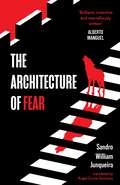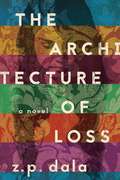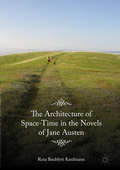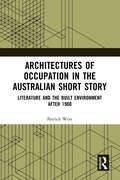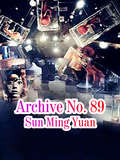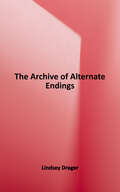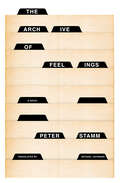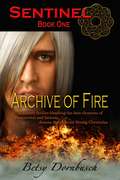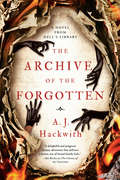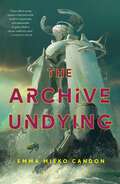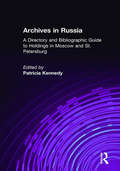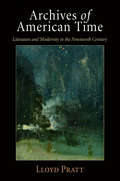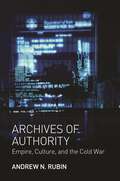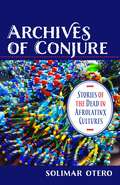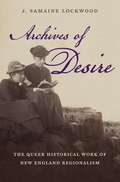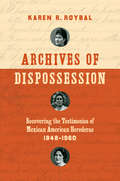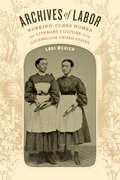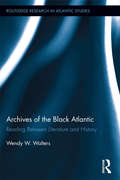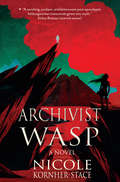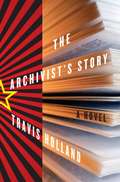- Table View
- List View
The Architecture of Fear
by Sandro William JunqueiraA powerful, exhilarating and unsettling tale about a dystopian city which explores the dynamics of power and oppression, and the silent strength of revolt.
The Architecture of Loss: A Novel
by Z. P. DalaA novel of forgiveness and reconciliation that shines light on the dark underbelly of South Africa’s fight for freedom and democracy. Estranged at the age of six from her mother, who sent her away from her hometown of Brighton in rural Zululand, brilliant architect Afroze Bhana has carved out an impressive life for herself in Cape Town. But when she receives word that her aging mother is desperately ill, she finds herself compelled to return to her place of birth to find answers about her painful childhood. Afroze arrives in Brighton to find that her mother, Sylvie—who was a doctor and a fierce activist during the dark days of the anti-apartheid struggle—is a shadow of her formidable self, but Sylvie has still retained her sarcasm and anger toward the daughter that she sent away. Somehow, Sylvie cannot draw her daughter close, even facing the looming threat of her own mortality. She remains in the cottage of Afroze’s childhood, frozen in a world where she surrounds herself with luxury and garish indulgences, cared for by the fiercely protective Halaima, a Malawian refugee. Especially painful for Afroze is the love and affection that Sylvie showers on Bibi, Halaima’s pampered and precocious daughter—love which she could never give her own daughter. A moving novel about the complexities of family ties, The Architecture of Loss beautifully explores the ways in which the anti-apartheid struggle—a struggle in which the roles of women have been largely overlooked—irrevocably damaged many of its unsung heroes.
The Architecture of Space-Time in the Novels of Jane Austen
by Ruta Baublyté KaufmannThis book argues that there are recurrent spatiotemporal patterns and structures in six Jane Austen novels which constitute a source of enduring, if unconscious, pleasure. More precisely, the book contends that there are overlapping natural and cultural cycles which co-exist in a constantly transmuting space-time and which are counterpointed with the linearity of pivotal events that drive the plot forwards. This work examines the psychological relations to these space-time patterns of the characters, principally the heroines, focusing on the transformations of their emotional states which prompt linear leaps.
Architectures of Occupation in the Australian Short Story: Literature and the Built Environment after 1900
by Patrick WestPatrick West’s Architectures of Occupation in the Australian Short Story cultivates the potential for literary representations of architectural space to contribute to the development of a contemporary politics of Australian post-colonialism.West argues that the predominance of tropes of place within cultural and critical expressions of Australian post-colonialism should be re-balanced through attention to spatial strategies of anti-colonial power. To elaborate the raw material of such strategies, West develops interdisciplinary close readings of keynote stories within three female-authored, pan-twentieth century, Australian short-story collections: Bush Studies by Barbara Baynton (1902); Kiss on the Lips and Other Stories by Katharine Susannah Prichard (1932); and White Turtle: A Collection of Short Stories by Merlinda Bobis (1999). The capacity of the short-story form to prompt creative and politically germinal engagements with species of space associated with architecture and buildings is underscored. Relatedly, West argues that the recent resurgence of binary thought—on local, national, and international scales—occasions an approach to the short-story collections shaped by binary relationships like a dichotomy of inside and outside. Concluding his argument, West connects the literary and architectural critiques of the story collections to the wicked problem, linked to ongoing colonial violences, of improving Australian Indigenous housing outcomes.Innovative and interdisciplinary, this book will be of interest to scholars and students of Literary, Architectural, and Postcolonial Studies. .
Archive No. 89: Volume 1 (Volume 1 #1)
by Sun MingYuanA woman's head soaked in formalin was accidentally found by Tang Doberman, the head of the police officer. As a police officer, he intended to investigate the matter, and as the police officers continued to obstruct him, he fell deeper and deeper into the darkness was spreading. How could he reverse the shocking murder caused by a head? [Previous Chapter] [Table of Contents] [Next Chapter] Reader: 189081841
Archive No. 89: Volume 2 (Volume 2 #2)
by Sun MingYuanA woman's head soaked in formalin was accidentally found by Tang Doberman, the head of the police officer. As a police officer, he intended to investigate the matter, and as the police officers continued to obstruct him, he fell deeper and deeper into the darkness was spreading. How could he reverse the shocking murder caused by a head?
Archive No. 89: Volume 3 (Volume 3 #3)
by Sun MingYuanA woman's head soaked in formalin was accidentally found by Tang Doberman, the head of the police officer. As a police officer, he intended to investigate the matter, and as the police officers continued to obstruct him, he fell deeper and deeper into the darkness was spreading. How could he reverse the shocking murder caused by a head?
The Archive of Alternate Endings
by Lindsey DragerTracking the evolution of Hansel and Gretel at seventy-five-year intervals that correspond with earth’s visits by Halley’s Comet, The Archive of Alternate Endings explores how stories are disseminated and shared, edited and censored, voiced and left untold. <p><p>In 1456, Johannes Gutenberg’s sister uses the tale as a surrogate for sharing a family secret only her brother believes. In 1835, The Brothers Jacob and Wilhelm Grimm revise the tale to bury a truth about Jacob even he can’t come to face. In 1986, a folklore scholar and her brother come to find the record is wrong about the figurative witch in the woods, while in 2211, twin space probes aiming to find earth's sister planet disseminate the narrative in binary code. Breadcrumbing back in time from 2365 to 1378, siblings reimagine, reinvent, and recycle the narrative of Hansel and Gretel to articulate personal, regional, and ultimately cosmic experiences of tragedy. <p><p>Through a relay of speculative pieces that oscillate between eco-fiction and psychological horror, The Archive of Alternate Endings explores sibling love in the face of trauma over the course of a millennium, in the vein of Richard McGuire's Here and Lars von Trier's Melancholia
The Archive of Feelings: A Novel
by Peter StammGiven a second chance with an old love, a coolly detached archivist questions the life he could have had, and whether it&’s not too late to live it. A poignant, ingeniously constructed new novel from &“one of Europe&’s most exciting writers&” (New York Times Book Review).Forty years ago—almost a lifetime—he confessed his love to a classmate and close friend, Franziska. Now, living in his late mother&’s house with the obsolete archive of the newspaper he once worked for, he looks back on days spent poring over files and clippings, increasingly withdrawn from the world. His occasional relationships never amounted to anything, and the memory of Franziska—who became pop singer Fabienne—continues to haunt him as she appears in the media.When the two cross paths again, the possibility of a different life feels achingly real. But should he risk the comfort of his ordered existence for a romance that might never match what he imagined?A subtle, mesmerizing portrait of late-blooming passion, The Archive of Feelings showcases Peter Stamm at his best.
Archive of Fire
by Betsy DornbuschTwins Aidan and Kaelin didn't realize until they got to university that most guys don't learn five ways to kill a man by the age of fourteen. Still, since their estranged father descends from the demon Asmodai, it's probably worth knowing how to defend themselves. But as years pass and threat never materializes, the twins suppose their mom is just paranoid - until she disappears. Their father tells them Asmodai has taken possession of their mother in order to infiltrate Sentinel, a treacherous coalition of demidemon rebels determined to protect humankind from the demon legions. The twins form a grudging alliance with Sentinel to rescue her, but when Asmodai murders their father to incite war, Sentinel starts to implode and Aidan and Kaelin must battle an enemy who wears their mother's face.
The Archive of the Forgotten (A Novel from Hell's Library #2)
by A. J. HackwithIn the second installment of this richly imagined fantasy adventure series, a new threat from within the Library could destroy those who depend upon it the most. The Library of the Unwritten in Hell was saved from total devastation, but hundreds of potential books were destroyed. Former librarian Claire and Brevity the muse feel the loss of those stories, and are trying to adjust to their new roles within the Arcane Wing and Library, respectively. But when the remains of those books begin to leak a strange ink, Claire realizes that the Library has kept secrets from Hell--and from its own librarians. Claire and Brevity are immediately at odds in their approach to the ink, and the potential power that it represents has not gone unnoticed. When a representative from the Muses Corps arrives at the Library to advise Brevity, the angel Rami and the erstwhile Hero hunt for answers in other realms. The true nature of the ink could fundamentally alter the afterlife for good or ill, but it entirely depends on who is left to hold the pen.
The Archive Undying (The Downworld Sequence #1)
by Emma Mieko CandonWar machines and AI gods run amok in The Archive Undying, national bestseller Emma Mieko Candon's bold entry into the world of mecha fiction.WHEN AN AI DIES, ITS CITY DIES WITH IT WHEN A CITY FALLS, IT LEAVES A CORPSE BEHIND WHEN THAT CORPSE RUNS OFF, ONLY DEVOTION CAN BRING IT BACK When the robotic god of Khuon Mo went mad, it destroyed everything it touched. It killed its priests, its city, and all its wondrous works. But in its final death throes, the god brought one thing back to life: its favorite child, Sunai. For the seventeen years since, Sunai has walked the land like a ghost, unable to die, unable to age, and unable to forget the horrors he's seen. He's run as far as he can from the wreckage of his faith, drowning himself in drink, drugs, and men. But when Sunai wakes up in the bed of the one man he never should have slept with, he finds himself on a path straight back into the world of gods and machines. The Archive Undying is the first volume of Emma Mieko Candon's Downworld Sequence, a sci-fi series where AI deities and brutal police states clash, wielding giant robots steered by pilot-priests with corrupted bodies. Come get in the robot.At the Publisher's request, this title is being sold without Digital Rights Management Software (DRM) applied.
The Archived (The Archived #2)
by Victoria SchwabThe Archive, an otherworldly library, contains the bodies of everyone who has ever died. But when the Archive is compromised from within, sixteen-year-old Mackenzie Bishop must use her skills as a Keeper to identify the traitor and prevent violent Histories from escaping into our world. The first in a dark, dazzlingly inventive YA fantasy series from the author of The Near Witch.
Archives in Russia: A Directory and Bibliographic Guide to Holdings in Moscow and St.Petersburg
by Patricia Kennedy Grimsted Patricia Kennedy GrimsteadThis is a comprehensive directory and bibliographic guide to Russian archives and manuscript repositories in the capital cities of Moscow and St. Petersburg. It is an essential resource for any researcher interested in Russian sources for topics in diplomatic, military, and church history; art; dance; film; literature; science; ethnolography; and geography. The first part lists general bibliographies of relevant reference literature, directories, bibliographic works, and specialized subject-related sources. In the following sections of the directory, archival listings are grouped in institutional categories. Coverage includes federal, ministerial, agency, presidential, local, university, Academy of Sciences, organizational, library, and museum holdings. Individual entries include the name of the repository (in Russian and English), basic information on location, staffing, institutional history, holdings, access, and finding aids.More comprehensive and up-to-date than the 1997 Russian Version, this edition includes Web-site information, dozens of additional repositories, several hundred more bibliographical entries, coverage of reorganization issues, four indexes, and a glossary.
Archives of American Time
by Lloyd PrattAmerican historians have typically argued that a shared experience of time worked to bind the antebellum nation together. Trains, technology, and expanding market forces catapulted the United States into the future on a straight line of progressive time. The nation's exceedingly diverse population could cluster around this common temporality as one forward-looking people.In a bold revision of this narrative, Archives of American Time examines American literature's figures and forms to disclose the competing temporalities that in fact defined the antebellum period. Through discussions that link literature's essential qualities to social theories of modernity, Lloyd Pratt asserts that the competition between these varied temporalities forestalled the consolidation of national and racial identity. Paying close attention to the relationship between literary genre and theories of nationalism, race, and regionalism, Archives of American Time shows how the fine details of literary genres tell against the notion that they helped to create national, racial, or regional communities. Its chapters focus on images of invasive forms of print culture, the American historical romance, African American life writing, and Southwestern humor. Each in turn revises our sense of how these images and genres work in such a way as to reconnect them to a broad literary and social history of modernity. At precisely the moment when American authors began self-consciously to quest after a future in which national and racial identity would reign triumphant over all, their writing turned out to restructure time in a way that began foreclosing on that particular future.
Archives of Authority: Empire, Culture, and the Cold War (Translation/Transnation #32)
by Andrew N. RubinCombining literary, cultural, and political history, and based on extensive archival research, including previously unseen FBI and CIA documents, Archives of Authority argues that cultural politics--specifically America's often covert patronage of the arts--played a highly important role in the transfer of imperial authority from Britain to the United States during a critical period after World War II. Andrew Rubin argues that this transfer reshaped the postwar literary space and he shows how, during this time, new and efficient modes of cultural transmission, replication, and travel--such as radio and rapidly and globally circulated journals--completely transformed the position occupied by the postwar writer and the role of world literature. Rubin demonstrates that the nearly instantaneous translation of texts by George Orwell, Thomas Mann, W. H. Auden, Richard Wright, Mary McCarthy, and Albert Camus, among others, into interrelated journals that were sponsored by organizations such as the CIA's Congress for Cultural Freedom and circulated around the world effectively reshaped writers, critics, and intellectuals into easily recognizable, transnational figures. Their work formed a new canon of world literature that was celebrated in the United States and supposedly represented the best of contemporary thought, while less politically attractive authors were ignored or even demonized. This championing and demonizing of writers occurred in the name of anti-Communism--the new, transatlantic "civilizing mission" through which postwar cultural and literary authority emerged.
Archives of Conjure: Stories of the Dead in Afrolatinx Cultures (Gender, Theory, and Religion)
by Solimar OteroIn Afrolatinx religious practices such as Cuban Espiritismo, Puerto Rican Santería, and Brazilian Candomblé, the dead tell stories. Communicating with and through mediums’ bodies, they give advice, make requests, and propose future rituals, creating a living archive that is coproduced by the dead. In this book, Solimar Otero explores how Afrolatinx spirits guide collaborative spiritual-scholarly activist work through rituals and the creation of material culture. By examining spirit mediumship through a Caribbean cross-cultural poetics, she shows how divinities and ancestors serve as active agents in shaping the experiences of gender, sexuality, and race.Otero argues that what she calls archives of conjure are produced through residual transcriptions or reverberations of the stories of the dead whose archives are stitched, beaded, smoked, and washed into official and unofficial repositories. She investigates how sites like the ocean, rivers, and institutional archives create connected contexts for unlocking the spatial activation of residual transcriptions. Drawing on over ten years of archival research and fieldwork in Cuba, Otero centers the storytelling practices of Afrolatinx women and LGBTQ spiritual practitioners alongside Caribbean literature and performance. Archives of Conjure offers vital new perspectives on ephemerality, temporality, and material culture, unraveling undertheorized questions about how spirits shape communities of practice, ethnography, literature, and history and revealing the deeply connected nature of art, scholarship, and worship.
Archives of Desire
by J. Samaine LockwoodIn this thought-provoking study of nineteenth-century America, J. Samaine Lockwood offers an important new interpretation of the literary movement known as American regionalism. Lockwood argues that regionalism in New England was part of a widespread woman-dominated effort to rewrite history. Lockwood demonstrates that New England regionalism was an intellectual endeavor that overlapped with colonial revivalism and included fiction and history writing, antique collecting, colonial home restoration, and photography. The cohort of writers and artists leading this movement included Sarah Orne Jewett, Alice Morse Earle, and C. Alice Baker, and their project was taken up by women of a younger generation, such as Charlotte Perkins Gilman and Pauline Elizabeth Hopkins, who extended regionalism through the modernist moment. Lockwood draws on a diverse archive that includes fiction, material culture, collecting guides, and more. Showing how these women intellectuals aligned themselves with a powerful legacy of social and cultural dissent, Lockwood reveals that New England regionalism performed queer historical work, placing unmarried women and their myriad desires at the center of both regional and national history.
Archives of Dispossession: Recovering the Testimonios of Mexican American Herederas, 1848–1960 (Gender and American Culture)
by Karen R. RoybalOne method of American territory expansion in the U.S.-Mexico borderlands was the denial of property rights to Mexican landowners, which led to dispossession. Many historical accounts overlook this colonial impact on Indigenous and Mexican peoples, and existing studies that do tackle this subject tend to privilege the male experience. Here, Karen R. Roybal recenters the focus of dispossession on women, arguing that gender, sometimes more than race, dictated legal concepts of property ownership and individual autonomy. Drawing on a diverse source base—legal land records, personal letters, and literature—Roybal locates voices of Mexican American women in the Southwest to show how they fought against the erasure of their rights, both as women and as landowners. Woven throughout Roybal's analysis are these women's testimonios—their stories focusing on inheritance, property rights, and shifts in power. Roybal positions these testimonios as an alternate archive that illustrates the myriad ways in which multiple layers of dispossession—and the changes of property ownership in Mexican law—affected the formation of Mexicana identity.
Archives of Labor: Working-Class Women and Literary Culture in the Antebellum United States
by Lori MerishIn Archives of Labor, Lori Merish establishes working-class women as significant actors within literary culture, dramatically redrawing the map of nineteenth-century US literary and cultural history. Delving into previously unexplored archives of working-class women's literature—from autobiographies, pamphlet novels, and theatrical melodrama to seduction tales and labor periodicals—Merish recovers working-class women's vital presence as writers and readers in the antebellum era. Her reading of texts by a diverse collection of factory workers, seamstresses, domestic workers, and prostitutes boldly challenges the purportedly masculine character of class dissent during this era. Whether addressing portrayals of white New England "factory girls," fictional accounts of African American domestic workers, or the first-person narratives of Mexican women working in the missions of Mexican California, Merish unsettles the traditional association of whiteness with the working class to document forms of cross-racial class identification and solidarity. In so doing, she restores the tradition of working women's class protest and dissent, shows how race and gender are central to class identity, and traces the ways working women understood themselves and were understood as workers and class subjects.
Archives of the Black Atlantic: Reading Between Literature and History
by Wendy W. WaltersMany African diasporic novelists and poets allude to or cite archival documents in their writings, foregrounding the elements of archival research and data in their literary texts, and revising the material remnants of the archive. This book reads black historical novels and poetry in an interdisciplinary context, to examine the multiple archives that have produced our historical consciousness. In the history of African diaspora literature, black writers and intellectuals have led the way for an analysis of the archive, querying dominant archives and revising the ways black people have been represented in the legal and hegemonic discourses of the west. Their work in genres as diverse as autobiography, essay, bibliography, poetry, and the novel attests to the centrality of this critique in black intellectual culture. Through literary engagement with the archives of the slave trader, colonizer, and courtroom, creative writers teach us to read the archives of history anew, probing between the documents for stories left untold, questions left unanswered, and freedoms enacted against all odds. Opening new perspectives on Atlantic history and culture, Walters generates a dialogue between what was and what might have been. Ultimately, Walters argues that references to archival documents in black historical literature introduce a new methodology for studying both the archive and literature itself, engaging in a transnational and interdisciplinary reading that exposes the instability of the archive's truth claim and highlights rebellious possibility.
The Archivist: A Novel
by Martha CooleyMatthias Lane is the proud gatekeeper to countless objects of desire, the greatest among them being T.S. Eliot's letters to Emily Hale. Now in his late 60s and archivist at an unnamed East Coast university, Matthias is--as one of his colleagues tells him--"exceptionally well defended." He's intent on keeping the Hale collection equally remote, and when a young poet first seeks access, Matthias rebuffs her with little difficulty. Still, Roberta Spire does remind him of his wife, Judith, who had also written poetry but had committed suicide 20 years earlier. And he is much taken with the student's self-possession: "Pleading never works with me," he concedes, "but authentic and angry self-interest does." Betrayal figures heavily in The Archivist. For starters, Roberta feels betrayed by her parents, German Jews who had spent World War II in hiding and emigrated to the U.S. soon afterward, re-creating themselves as Christians. She has only recently discovered her Jewish background. The irony is that Matthias's wife had also been an Eliot adept and had felt violated by a false version of her own past and destroyed when confronted with the realities of the Holocaust. No wonder Roberta sees the Hale letters as a Holy Grail, the key to her questions about religious conversion and identity. What holds this exceptionally ambitious and layered first novel together is the love all three main characters have for the pleasures of the text and the knowledge they share that time is, as Eliot writes, both preserver and destroyer. Eliot, after all, had wanted Emily Hale to destroy his letters (and in reality they are sealed until 2020, safe at Princeton University). Martha Cooley is deeply concerned, as are her characters, with questions of conscience, privacy, action and inaction, and security--personal and scholarly. If there is one parallel too many in this impressive work, perhaps that is more like life than some of us care to admit. --Kerry Fried
Archivist Wasp
by Nicole Kornher-StaceWasp's job is simple. Hunt ghosts. And every year she has to fight to remain Archivist. Desperate and alone, she strikes a bargain with the ghost of a supersoldier. She will go with him on his underworld hunt for the long-long ghost of his partner and in exchange she will find out more about his pre-apocalyptic world than any Archivist before her. And there is much to know. After all, Archivists are marked from birth to do the holy work of a goddess. They're chosen. They're special. Or so they've been told for four hundred years.Archivist Wasp fears she is not the chosen one, that she won't survive the trip to the underworld, that the brutal life she has escaped might be better than where she is going. There is only one way to find out.
The Archivist's Story
by Travis HollandMoscow, 1939. In the recesses of the infamous Lubyanka prison, a young archivist is sent to authenticate an unsigned story confiscated from one of the many political prisoners there. The writer is Isaac Babel. The great author of Red Cavalry is spending his last days forbidden to write, his final manuscripts consigned to the archivist, Pavel Dubrov, who will ultimately be charged with destroying them. The emotional jolt of meeting Babel face-to-face leads to a reckless decision: he will save the last stories of the author he reveres, whatever the cost. From the margins of history, Travis Holland has woven a tale of the greatest power. Pavel’s private act of courage in the face of a vast bureaucracy of evil invigorates a life that had lost its meaning, even as it guarantees his almost certain undoing. A story of suspense, courage, and unexpected avenues of grace, The Archivist’s Story is ultimately an enduring tribute to the written word.
Archivo
by Jorge Enrique LageEn una Cuba distópica, como la que siempre narra Lage, los personajes (modelos con pseudónimos reguetoneros, vírgenes de la Caridad del Cobre robóticas, médiums que localizan fantasmas de agentes de la CIA o del G-2, travestis que quieren imponerse la heterosexualidad, gossipgirls o chivatazzis, es decir, mezclas de chivatas y paparazzis) escenifican la debacle de una civilización basada en la delación y el escarnio. Rafael Rojas Archivo es una novela performativa: enuncia desde la corporalidad. Lage pone a gozar nuestro cuerpo disciplinado. En un mundo heterotópico se exhibe la fantasmagórica vida de enseres, pacientes, vigilantes y bacterias. Debería existir únicamente este tipo de novela, tan excitante y triste como La Habana. Martha Luisa Hernández Cadenas Un buen archivo tiene dosis inexactas de terror, diversión y discapacidad. El de Jorge Enrique Lage me hizo llamar al Rescue a las dos de la madrugada. Legna Rodríguez Iglesias
